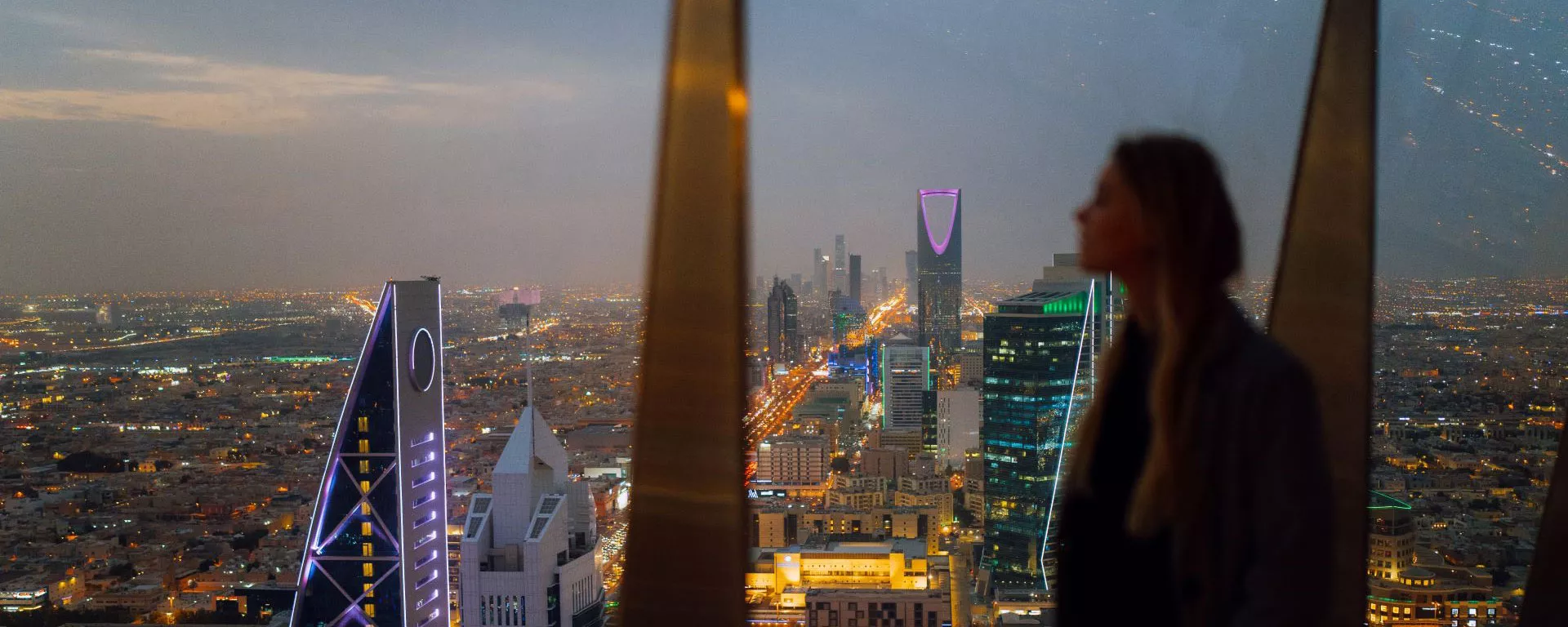DESTINATION DETAIL
Riyadh
Details
📍 Location & Meaning of the Name
- Riyadh (pronounced Ar-Riyāḍ) means “gardens”
or “meadows” in Arabic, from the root rawdah, referring to
fertile land and oasis greenery in the desert.
- The city lies in central Saudi Arabia, on the Najd plateau,
at about 600 m above sea level.
🏛 History
- Riyadh’s site has been inhabited for centuries; it developed from
the oasis town Hajr (7th century CE), an important settlement of
the Banū Hanīfah tribe.
- In the 18th century, it rose to prominence under the First Saudi
State (1744), associated with the alliance between Muhammad ibn Saud
and Sheikh Muhammad ibn Abd al-Wahhab.
- In 1902, King Abdulaziz Al Saud captured Riyadh, making it
the base for the unification of the modern Kingdom of Saudi Arabia
(founded in 1932).
- Since then, Riyadh has transformed into a modern political,
economic, and cultural hub, home to ministries, embassies, and global
businesses.
🌤 Weather & Climate
- Riyadh has a hot desert climate (BWh).
- Summers: extremely hot, often above 40–45 °C.
- Winters: mild and pleasant, with daytime temps
around 15–25 °C, but nights can be chilly.
- Rainfall is scarce and irregular, usually in March–April.
- Best time to visit: October–April.
👥 People & Culture
- Population: about 7.5 million (2022), making it the largest
city in Saudi Arabia.
- A cosmopolitan mix of Saudis, expatriates, and migrant workers
from Asia, the Middle East, Europe, and beyond.
- Culture: deeply rooted in Islamic and Bedouin traditions,
yet increasingly modern with global influences.
- Social life emphasizes family gatherings, religious practices,
and hospitality.
🏞 Best Places to Visit
- Masmak Fortress – historic clay fort where King
Abdulaziz began the Saudi unification.
- National Museum of Saudi Arabia –
showcases Arabian history from pre-Islamic to modern times.
- Al Murabba Palace –
traditional royal residence.
- Kingdom Centre Tower & Sky Bridge –
iconic skyscraper with panoramic views.
- Al Diriyah (At-Turaif District, UNESCO site) – birthplace of the Saudi state, with restored mudbrick palaces
and cultural venues.
- Wadi Hanifah – natural valley with parks and picnic
spots.
- Edge of the World (Jebel Fihrayn) –
dramatic desert cliffs about 90 km from the city.
🍽 Food
- Local cuisine features Kabsa (rice with spiced meat), Jareesh
(cracked wheat dish), and dates with Arabic coffee.
- International dining is widespread, from fine dining to global
chains.
- Traditional souks like Souq Al-Zal offer spices, perfumes,
and street food.
🎭 What It Offers Tourists
- History & heritage:
forts, palaces, museums, UNESCO sites.
- Modern attractions:
luxury malls, high-rise towers, theme parks.
- Cultural immersion:
festivals, souks, traditional Najdi architecture.
- Nature & adventure:
desert safaris, hikes to Edge of the World, and valleys around Riyadh.
- Events: Riyadh Season (entertainment &
cultural festival), concerts, and international exhibitions.
×




